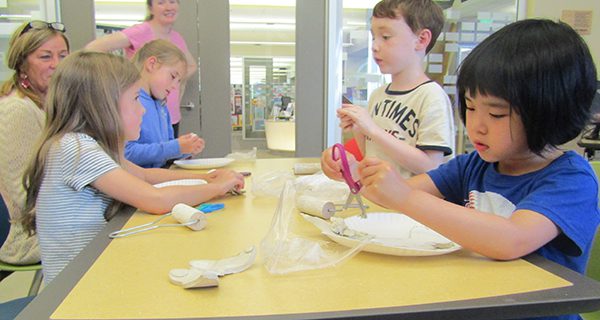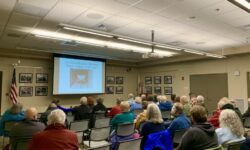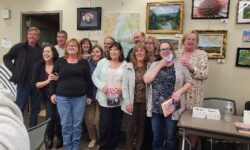By Amelia Tarallo
Hometown Weekly Staff
Summer has almost begun. People’s yards are full of bright, beautiful flowers. The trees are once again full of vibrant green leaves. Migrating birds have returned to the area to make their nests. Bees are buzzing as they carry pollen from one flower to another. If you look outside, you may even be lucky enough to see a butterfly flapping its tiny wings.
On Tuesday, May 21, Sarah from the Museum of American Bird Art returned to the Walpole Library to present her program on monarch butterflies and their impressive migration. Sarah began her program by reading the children and their parents a book all about the monarch migration, titled, “Hurry and the Monarch,” by Antoine Ó Flatharta. During the story, Hurry the turtle befriends a monarch butterfly while they take a rest in garden, amidst her migration to Mexico. Hurry learns all about his new friend and her migration, before she once again takes off, headed to Mexico.
Following the completion of the book, Sarah told the kids a bit more about monarch butterflies and their life cycle. Starting with the egg cycle and onward, kids were fascinated by just how cool these beautiful flying creatures are. “Wow, they’re really that tiny?” one child asked, remarking on the size of the butterfly’s eggs. One of the most interesting facts the kids learned was that the monarch is actually very poisonous to prey species. The butterflies consume and lay their eggs on milkweed, a poisonous plant. “Sometimes birds will eat the butterflies and then, blech, they’ll barf them up,” explained Sarah.
Monarch butterflies migrate yearly from the north to Mexico, taking breaks in some parts of California and some part of Florida. “Some scientists think that they go to Cuba, but we’re still studying that,” said Sarah. While wintering in Mexico, the butterflies spend much of their time in a specific type of fir tree. “The weather is perfect for them,” explained Sarah. “It’s not too hot, not too cold. It’s just right for them.” She showed the kids and their parents a photo of a group of thousands of monarch butterflies, covering so much of a tree that their wings looked like the tree’s leaves.
Sarah finished her presentation with a graph that showed the uptick in the monarch butterfly population and how it has rapidly increased in the last couple of years. “We want to keep it up,” she said. To do this, Sarah gave the kids and their parents tips for making a monarch-friendly environment in their own yards. By planting milkweed and nectar plants, monarchs will be attracted to the yard and have a good place to rest and eat as they spend their time here in New England.
After learning all about monarchs, the kids were each given a pancake-shaped chunk of air-dry clay. “We’re going to use this tool to help us make the pancake a little bit bigger so the stencil will fit,” explained Sarah. After the kids had rolled their clay out, they each placed their butterfly-shaped stencil onto the clay. Carefully, using scissors, they cut their butterflies out and laid them on the table. Next came the best part: decorating. Taking tiny toothpicks, kids made designs in their clay, sketching in lines. Some tried to make flowers in their clay. Others used straws to make polka dots that covered the wings of their butterflies. “You guys did such a good job!” exclaimed Sarah as she glanced around the room to see all the butterflies.
Parents and kids both left the program with a newfound appreciation for the tiny flying creatures that travel thousands of miles to and from Mexico. For now, they’ll be able to look outside and see the real ones dancing about the flowers.
Come winter time, they’ll have their clay reminders of why these beautiful fluttering butterflies are so impressive.
























